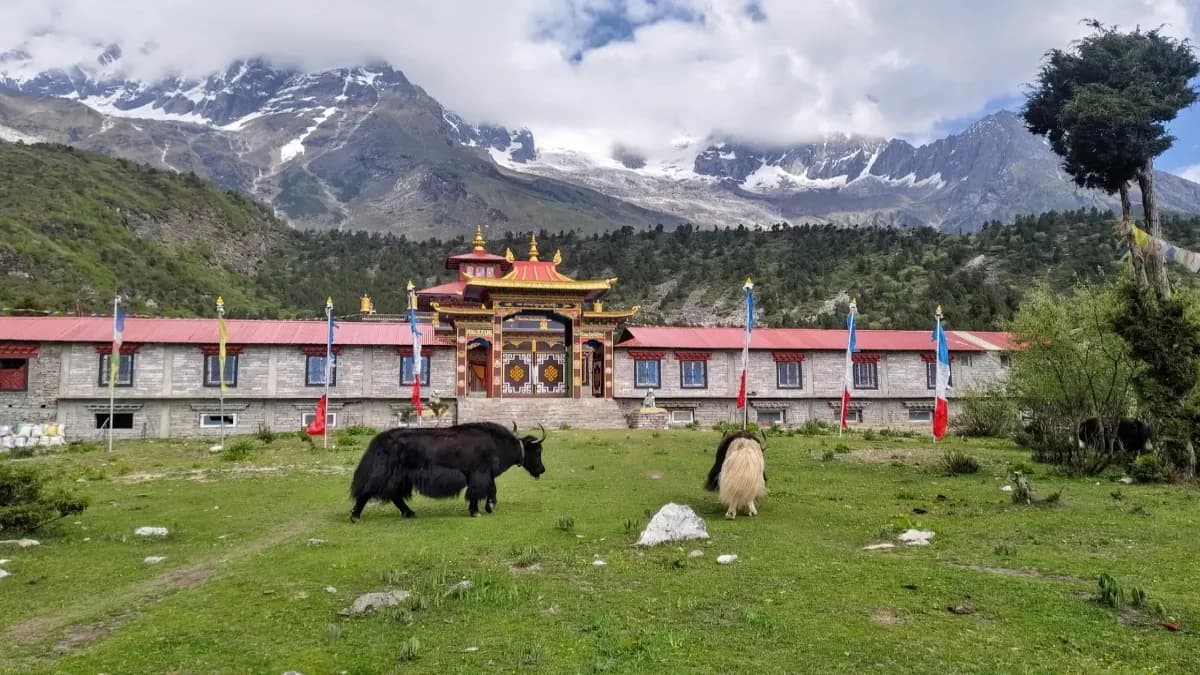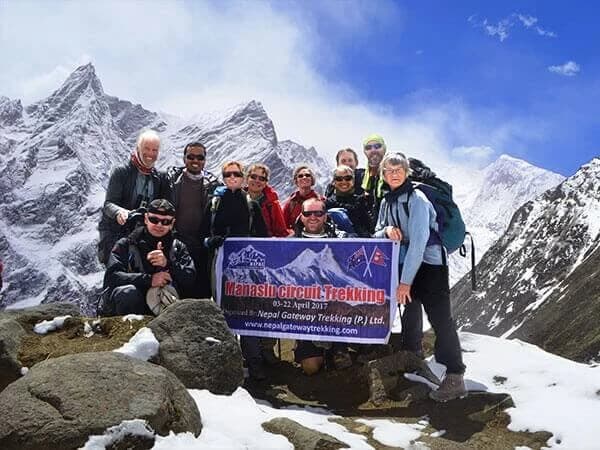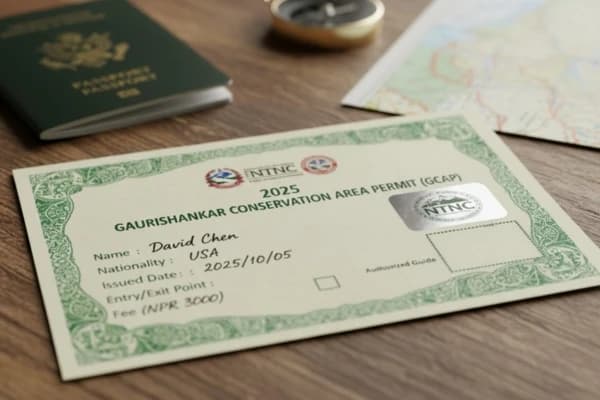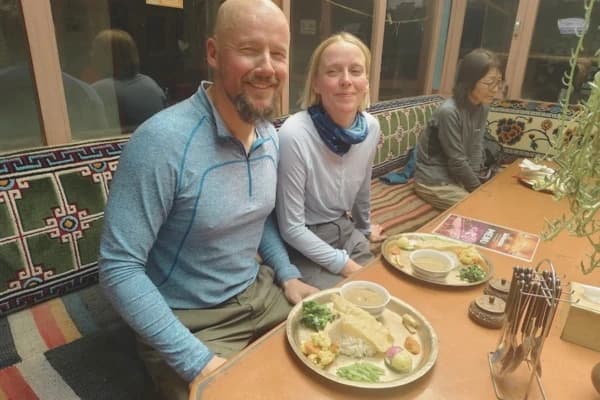The best time for Manaslu Circuit Trek is during spring (March to May) and autumn (September to November). Trekking in other seasons brings risky Manaslu Circuit weather, like heavy snow, avalanches, and landslides, especially around Larkya La Pass. These conditions make the trails dangerous and can close teahouses, which are essential for rest along the way.
Not choosing the best season means missing out on clear views of Mount Manaslu, peaceful villages like Samagaon and Bimtang, and the vibrant rhododendron forests. You'll also miss cultural festivals like Dashain and Tihar, and the chance to see wildlife such as snow leopards and red pandas in the Manaslu Conservation Area.
Spring and autumn seasons offer the perfect trekking conditions in Manaslu, with comfortable temperatures and stable weather. Be sure to carry essential gear like crampons, down jackets, and waterproof boots for safety.
Choosing the right season guarantees you enjoy stunning views of the Budhi Gandaki River valley, cross the Larkya La Pass safely, and experience the true beauty of the Manaslu Circuit.
Trek beyond the ordinary—book your Manaslu Circuit Trek with Nepal Gateway Trekking today!
Best Seasons for Manaslu Circuit Trek
If you're looking for the best season to trek Manaslu, stick with spring or autumn for the safest trails, vibrant landscapes, and the most comfortable weather.
Manaslu Circuit Trek in Spring (Mar–May)
Spring is a favorite for many doing the Manaslu trek in spring, thanks to the blooming rhododendrons, stable weather, and moderate crowds along the trail.
- Weather: Mild and stable
- Trail: Blooming rhododendrons, clear views of Mount Manaslu
- Crowd: Moderate
- Ideal for: Photographers, nature lovers
- Tea house availability: Good
Manaslu Circuit Trek in Monsoon (Jun–Aug)
Monsoon makes the trails challenging and risky due to heavy rainfall and unstable conditions.
- Weather: Heavy rain, landslides common
- Trail: Muddy, leeches in lower altitudes near Budhi Gandaki River
- Views: Often obstructed by clouds
- Risk: High
- Permits: Harder to obtain due to safety concerns
Manaslu Circuit Trek in Autumn (Sep–Nov)
The Manaslu trek in autumn is especially popular in October, offering crystal-clear views of Mount Manaslu and ideal hiking conditions across Larkya La Pass.
- Weather: Crystal clear skies, less rain
- Trail: Dry and firm
- Crowd: Highest—book teahouses in advance
- Ideal for: First-time trekkers, guided groups
- Views: Larkya La Pass views at their best
Manaslu Circuit Trek in Winter (Dec–Feb)
Winter is quiet and snowy, suited only for those prepared for cold and tough conditions.
- Weather: Cold, snow above 3,500m
- Trail: Quiet, some teahouses closed
- Risk: Snow can block Larkya La Pass
- Suitable for adventurous and well-prepared trekkers
Weather and Temperature Overview by Season
|
Season |
Temperature |
Trail Conditions |
Visibility |
| Spring |
6–20°C |
Rhododendron blooms |
Clear |
|
Monsoon |
12–25°C |
Wet, muddy, leeches |
Poor |
| Autumn |
5–18°C |
Dry and firm |
Excellent |
| Winter |
-6 to 8°C |
Snow-covered, icy |
Clear (if lucky) |
Let Nepal Gateway Trekking help you plan the perfect trek—safe, scenic, and unforgettable.
Expert Tips for Trekking Manaslu Circuit in Different Seasons
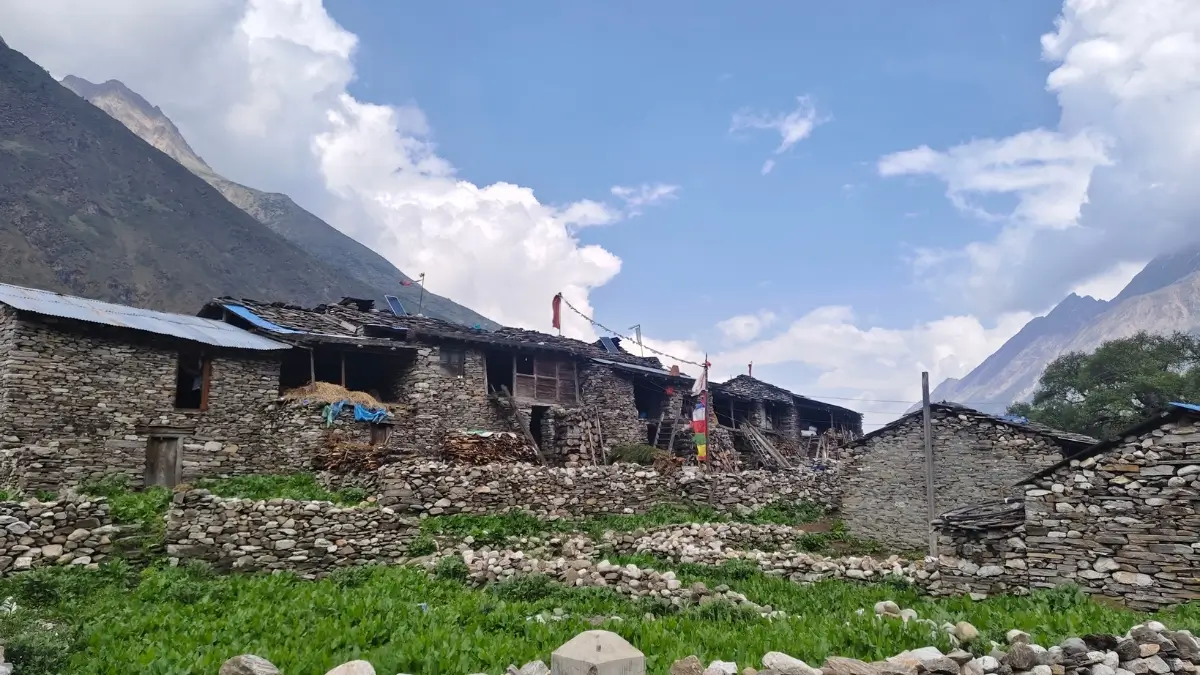
The Manaslu Circuit Trek offers different experiences each season, so choosing the right season to your goals and needs is necessary.
Recommended Seasons for Manaslu Circuit Trek
Spring & Autumn
The best time for Manaslu Circuit Trek is during the spring and autumn seasons. These seasons offer stable Manaslu circuit weather, clear views of Mount Manaslu and Larkya La Pass, and readily available teahouses. Though there is a low risk of landslides or avalanches, we will make your trek in Manaslu safer and more enjoyable.
Gear checklist
- Spring: Sun hat and sunglasses for daytime sun, trekking poles, lightweight clothing layers
- Autumn: Windproof jacket for chilly mornings and evenings, solid hiking boots for rugged paths, and dry socks to keep your feet dry and blister-free.
Tips
- These seasons can be busy, especially autumn, so book teahouses early.
- Spring features blooming rhododendrons, and autumn offers cultural festivals like Dashain and Tihar.
Challenging or Not Recommended Seasons
Winter & Monsoon
During the monsoon, heavy rain, landslides near the Budhi Gandaki River, and muddy, slippery trails make trekking in Manaslu tough, and leeches in the lower valleys don’t help either. You’ll often miss those stunning mountain views because of clouds.
Then in winter, the Larke Pass weather gets really harsh, with freezing cold and lots of snow that can block the pass completely. Many teahouses above 3,500 meters close down, and avalanches become a real danger. So, winter trekking is only for experienced hikers who come fully prepared.
Safety gear and tips
- Always trek with a licensed guide in these seasons.
- Carry crampons, microspikes, a warm down jacket, and waterproof boots.
- Having travel insurance and an emergency evacuation plan is essential.
Packing Essentials for Each Season
Packing the right gear is essential for the best time for the Manaslu Circuit Trek, as trekking conditions in Manaslu change with each season. During spring and autumn, layers and windproof jackets keep you comfortable, while winter requires thermal gear and crampons for icy trails. Monsoon demands rain protection and leech repellent to stay safe on wet and slippery paths.
|
Season |
Must-Have Items |
|
Spring |
Layered clothes, sunscreen, sunglasses, trekking poles, hat, lightweight gloves, and a hydration system |
| Autumn |
Windbreaker, dry socks, warm hat, trekking boots, gloves, sunglasses, trekking poles |
|
Winter |
Crampons, gloves, thermal gear, down jacket, insulated hat, face mask, trekking poles, wool socks |
|
Monsoon |
Raincoat, quick-dry clothes, leech repellent, waterproof boots, waterproof backpack cover, umbrella |
For a comprehensive packing list, refer to our Manaslu Circuit Trek Guide.
Are Permits Affected by Season?
Yes, permits for the Manaslu Circuit Trek are required year-round. You must have the Manaslu Restricted Area Permit (MRAP) and the Manaslu Conservation Area Permit (MCAP) to enter. However, during monsoon and deep winter, local officials may deny access to protect trekkers from dangerous conditions.
If your Manaslu Circuit Trek route passes through the Annapurna region, you’ll also need the Annapurna Conservation Area Permit (ACAP). Additionally, hiring a licensed guide is mandatory throughout the trek for safety and permit compliance.
For the latest official details and updates on trekking permits, always check the Nepal Tourism Board (NTB) Trekking Permits website.
Crowds and Accommodations
Crowds and accommodation availability on the Manaslu Circuit Trek vary greatly between peak and off-seasons.
Peak Season (Oct–Nov & Mar–Apr)
- The highest number of trekkers
- Popular villages like Samdo and Dharmsala fill up fast
- Early booking of teahouses is essential
Off-Season (Jun–Aug & Dec–Feb)
- Trails are quiet with fewer trekkers
- Limited accommodation options are available
- Some teahouses, especially at higher altitudes, may be closed
Which month is the best time for the Manaslu Circuit Trek?
Here’s a quick month-by-month comparison to help you decide the best time for your Manaslu Circuit Trek.
|
Month |
Trail Condition |
Crowd |
Recommended For |
|
March |
Cool, dry |
Medium |
Nature lovers |
|
April |
Dry, colorful |
High |
All trekkers |
| May |
Warm, dusty |
High |
Trekkers avoiding cold |
|
June–Aug |
Wet, muddy, risky |
Low |
Avoid unless pro |
|
September |
Clear, fresh |
Medium |
Great views, less crowded |
| October |
Perfect conditions |
Very High |
Everyone |
| November |
Dry, fewer crowds |
Medium |
All trekkers |
|
Dec–Feb |
Snowy, icy |
Low |
Experienced only |
Ready to Trek Manaslu? Here’s When to Go and Why It Matters
Spring (March–April) and autumn (October–November) are the best times for Manaslu Circuit Trek. You’ll get clear views of Mount Manaslu, safer trails across Larkya La Pass, and full access to teahouses in villages like Samagaon and Bimtang.
Whether it’s blooming rhododendrons in spring or crisp skies in autumn, this is when the Manaslu trek truly shines.
Plan your perfect trek with Nepal Gateway Trekking—experience the Himalayas at their best.
Frequently Asked Questions (FAQs)
When is the best time to trek the Manaslu Circuit?
The best time for the Manaslu Circuit Trek is spring (March–April) and autumn (October–November). These seasons offer stable weather, open teahouses, and clear views of Mount Manaslu and Larkya La Pass.
Can I trek Manaslu during the monsoon season?
It’s possible, but not recommended. Monsoon brings heavy rainfall, leeches in lower altitudes, and frequent landslides—especially near the Budhi Gandaki River. Only attempt it with an experienced guide and safety gear.
What gear is needed for winter trekking?
For winter, you’ll need crampons, microspikes, thermal layers, a down jacket, waterproof boots, and gloves. Snow often blocks trails near Larkya La Pass, making preparation essential.
How crowded does the trail get in peak seasons?
During the best time for the Manaslu Circuit Trek—particularly October—trails can get busy. Teahouses in villages like Samagaon and Dharmsala fill up fast, so advance booking is highly advised.
Is it safe to trek solo in winter or monsoon?
No. Trekking solo in the off-season can be dangerous due to avalanches, freezing temperatures, and limited accommodation. If you still want to trek solo, always hire a licensed guide.
How to handle accommodation bookings in peak seasons?
If you're trekking during the best time for the Manaslu Circuit Trek, book your teahouses at least 2–3 weeks in advance. Agencies like Nepal Gateway Trekking can arrange everything for you.
Does the season affect permit approval?
Yes. While permits like MRAP, MCAP, and ACAP are required year-round, access may be restricted during heavy monsoon or deep winter for safety reasons.
Any final advice for choosing the best time for Manaslu Circuit Trek?
Plan around the seasons that match your comfort level. If you prefer quiet trails and snowy landscapes, winter might suit you—but for most trekkers, spring and autumn remain the best and safest choice.
